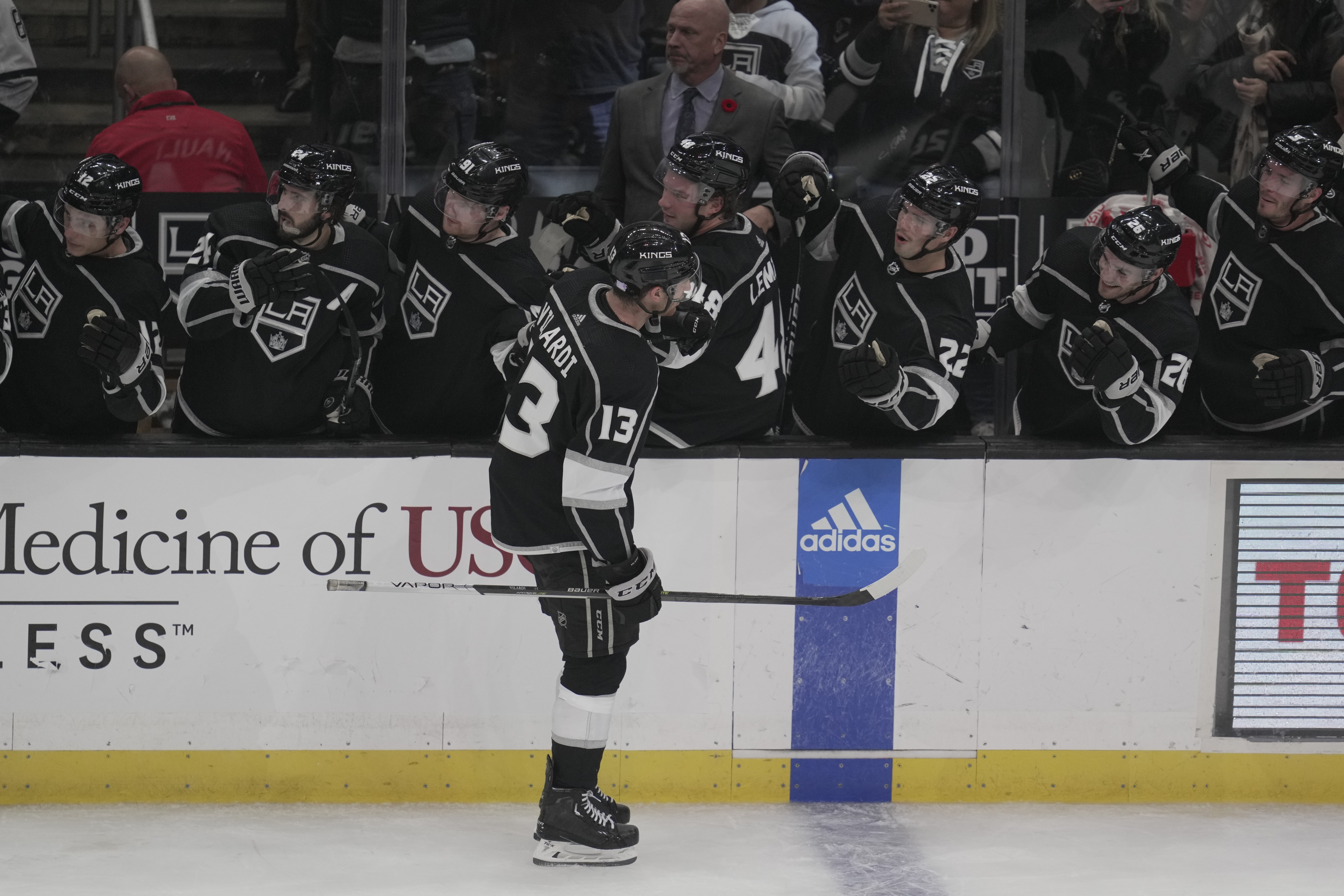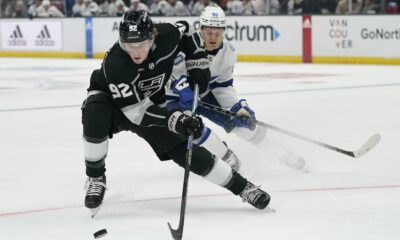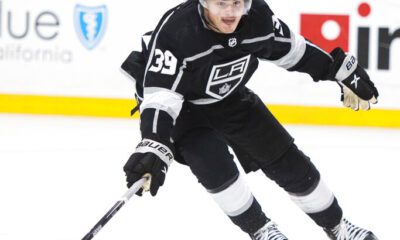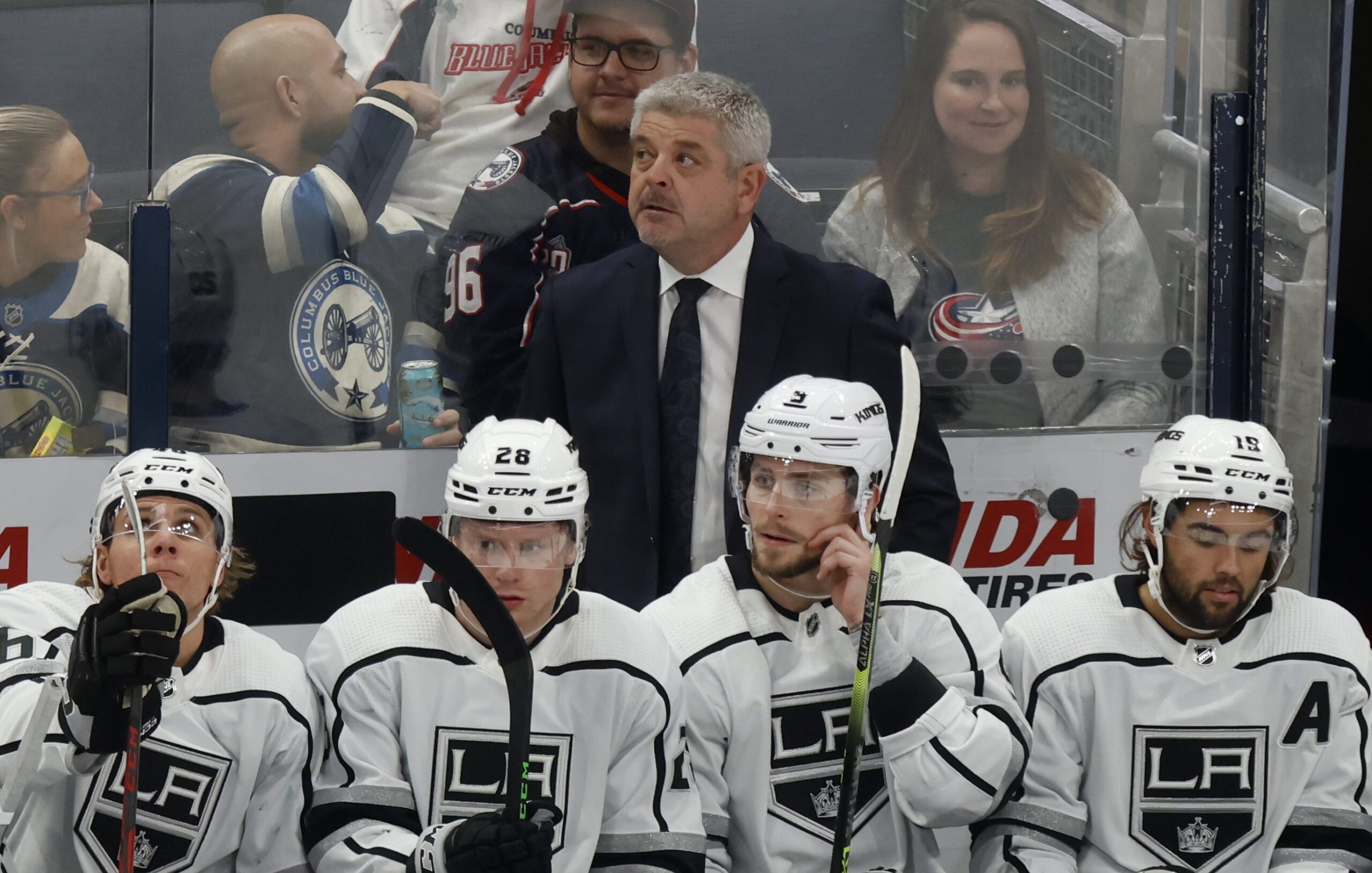LA Kings
Do the Kings Have the Right Players to Win a Cup?

Every team is building for one goal.
To win the Stanley Cup. Each team builds a little differently and has its own way of doing it, but there are some things that are consistent with the best teams.
The Athletic’s Corey Pronman recently published an article trying to quantify the common threads between the four remaining teams to see what we can learn from how they’ve built.
Pronman graded out the team’s core skaters — the top-three centers, the top-four defensemen and the top-four wingers — in an attempt to see what qualities lead to success in the playoffs.
Pronman wrote this article through the lens of what teams should target in the draft, but there are more uses. We can use it to look at whether the Los Angeles Kings have built a Cup contender on an individual level.
Do they have the right kinds of players to make a deep run in the postseason?
Of course, this is a small sample size and doesn’t conclusively prove anything, but it’s still an interesting exercise.
What you need to win:
First, we have to look at what Pronman found. He looked at the team’s core skaters and graded them out on three key attributes, on a scale from 0-4. Their skating, puck play — which encompasses’ puck skill and hockey IQ; essentially how much offense they create — and their compete level. While also mentioning their size.
Interestingly, skating was the “worst” skill among wingers. What you see in the remaining teams are big, skilled wingers with a high compete level. No winger scored below average for puck play or compete, with several receiving subpar skating grades.
It changes a bit with centers. Puck play drops, with skating and size increasing. A high score in compete level remains though.
Skating was most valued among defensemen. With just five of the 16 defensemen remaining receiving a below-average grade in skating. The remaining defensemen are almost all big players, who either skate well or compete hard. Sometimes both. The smallest defensemen remaining are Brendan Montour and Gustav Forsling, both standing at 6 feet.
So, you need big wingers with skill. Centers that can give a little back in the skill department but need to have size and skate well. And defensemen who need size and skating. With everyone needing a high compete level. Just one player, Shea Theodore, scored below a two in compete.
Do the Kings have the right players?
Now that we know what we’re looking for, we can examine if the Kings have what they need. I’m going to skim over a few players who we know have what it takes and focus a little more on the younger players who will be a part of this team’s core for a long time.
I’ll also discuss players who aren’t “core pieces” right now but could be in the future. Think Arthur Kaliyev or Brandt Clarke.
Forwards:
Anze Kopitar: Obviously, Anze Kopitar has what it takes, even at 35 years old. He’s a pretty complete player, not the fastest but his strength and balance make up for it in the skating department. And he would score highly in puck play and compete. His 6-foot-4 frame also fits the mold.
Phil Danault: Good skater, average puck skills and a plus-level competitor. Phil Danault clearly fits the mold too.
Now that those three are out of the way, let’s really get into it.
Adrian Kempe: This year’s playoffs were a real coming-out party for Adrian Kempe, his five goals and eight points led the team in both categories and he was excellent in all three zones. Looking at the criteria of this article, he definitely fits the mold.
He’s big and would likely score average in puck play and compete. With a top-tier skating grade. If you’re looking for big, skilled wingers who compete hard, Kempe’s your kind of player. He maybe gives back a little in the puck-play department compared to the really top-end players like Jason Robertson or Jack Eichel. But his elite skating makes up for it.
Viktor Arvidsson: Pronman mentions four forwards who come in at 5-foot-11 or shorter and points out that they’re either excellent skaters or high-end skill players who compete hard.
At just 5-foot-10, Viktor Arvidsson fits in as an excellent skater who competes hard. Still a highly-skilled player, he’s probably average compared to most top-six players remaining in puck-play.
Arvidsson doesn’t fit the traditional mold here, but there are still examples of a player like him left.
Trevor Moore: Similar to Arvidsson, Trevor Moore would fall into the excellent skater who competes hard, category. Moore had a tough season with injury but on an individual tools basis fits in as another outlier. His compete and skating gets him there even if he lacks ideal size.
Kevin Fiala: Another undersized forward compared to the average player’s left. Kevin Fiala’s puck play and skating alone get him there. I’d be interested to see how Pronman would rank Fiala’s compete level.
Fiala plays with a lot of emotion and fire, but I’m not sure that would qualify as compete here. His defensive commitment leaves something to be desired and I think this could knock his compete grade down. Still, I imagine he comes in as average in this category. With plus-level puck play and skating, he’d still fit the mold despite less-than-ideal size.
Quinton Byfield: Quinton Byfield would grade out really well here from an individual tool’s perspective. A hard competitor with a ton of size and plus-level skating. He’d fit the mold of a center.
The issue is, we haven’t seen good enough puck play at the NHL level for a top-six center. The tools he has shown are great for a third-line center, but he needs to be more than that.
He’s shown high-end puck play at the junior level and if he can translate that to the NHL, he’ll be an ideal playoff center.
Gabe Vilardi: This article does a lot to indicate that Gabe Vilardi will be an extremely effective playoff performer moving forward, especially at wing. A subpar skater with high-end puck play and size, he fits the mold we’re seeing perfectly.
A few years ago, people would have questioned if he has good enough compete to perform come springtime. But I think he proved he has it this season. It isn’t high-end, but he competes hard enough. An average grade in compete and skating would be enough given his skill and size.
Arthur Kaliyev: Similar to Vilardi in some ways, seeing that skating is the “least” desired trait for top-six forwards in the playoffs is ideal for Kaliyev.
He’s got underrated size and very good skill. His compete can come into question at times, but it’s probably right around average. I think he’ll need to up the compete level a bit and continue working on his overall hockey IQ. But, seeing other players who look like Kaliyev find success at this time of the year should be encouraging for fans.
Rasmus Kupari: Good skating and compete should make Rasmus Kupari an ideal third-line center based on these criteria. But I’m guessing he’d score a zero on puck play right now which kills him. There are tools there which suggest he can be an effective player in the postseason if he can make some big strides in the puck-play department.
Defense:
Drew Doughty: Another obvious yes. Drew Doughty competes hard, skates well and has good puck skills. While not a bruiser, at 6-foot-1 size isn’t an issue either.
Mikey Anderson: Despite standing at just 6 feet, which ties him as the shortest remaining defenseman, Mikey Anderson fits the prototype we’re seeing. He’s a high-end skater who competes extremely hard.
He’d grade out pretty low in puck skills, probably a one, but with high grades in skating and compete he’d still fit in nicely.
Vladislav Gavrikov: Vladislav Gavrikov is an interesting one. I imagine he’d grade out as average in most categories, maybe slightly above-average in compete and below in puck play. But his 6-foot-3 frame puts him over the top here.
He doesn’t have one stand-out attribute here. He’s probably a two in all categories, but that’s enough given his size.
Matt Roy: You can almost copy and paste what was said about Gavrikov here for Roy. Good at everything, great at nothing.
He is a few inches shorter than Gavrikov, but I’d give Roy a slight edge in compete.
Sean Durzi: Pronman’s article should give a lot of confidence in players like Kaliyev and Vilardi, but probably kill some confidence in Sean Durzi.
He’d score well in compete but would be below average in the other two categories as a 6-foot defenseman.
Some people might raise an eyebrow at the idea he’d score below average for puck play. But his frequent turnovers would kill him here. While excellent on the power play, he leaves a lot to be desired with the puck at even strength.
Even going back to last season, I questioned if Durzi had top-four potential and this article certainly didn’t help his case in my eyes.
Brandt Clarke: Clarke’s the most interesting player to discuss in this context. He’s got ideal size at 6-foot-2 and high-end puck play. But his skating is below average and his compete is average at best.
He’s one of the more unique prospects in hockey. There aren’t many defensemen who look like Clarke and that makes him difficult to project.
Clarke’s compete level will be the difference maker. We know the skill is elite and the skating is subpar. But the compete grade is one that’s difficult to predict.
If he becomes a high-end competitor like Doughty, I will have no concerns about Clarke’s future come playoff time. If he doesn’t develop that element though, there are reasons to be concerned.
Conclusion:
The Kings do, or will, have the individuals needed to win a Cup from a tool’s perspective. However, and this is a big one, I think they have too many undersized forwards.
Having one, maybe two, core forwards who are undersized and make up for it in other areas works. But when you’ve got three and sometimes four when Blake Lizotte is playing third-line center, it’s a problem.
All three of Moore, Arvidsson and Fiala are good to great players. And all of them have the tools to be effective in the postseason, but this leaves me wondering if having all three of them as core pieces can work.
Fiala’s an elite enough player that you can probably remove him from the conversation. But, replacing Arvidsson or Moore in the top-six with a big, skilled winger who gives a little back in the skating department might be a good thing for the Kings.
Fortunately for them, they have players like Vilardi and Kaliyev in the organization who can fit that mold.





